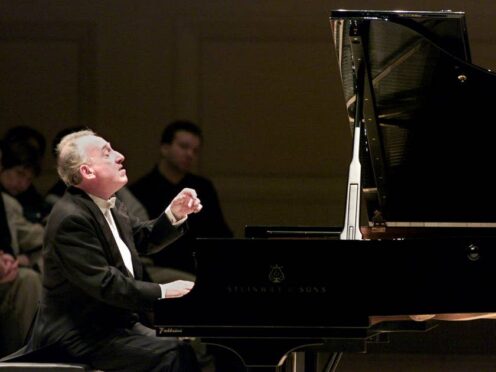
Maurizio Pollini, a Grammy-winning Italian pianist who performed frequently at La Scala opera house in Milan, has died aged 82.
Pollini died on Saturday, La Scala said in a statement. The announcement did not give a cause of death, but Pollini had been forced to cancel a concert at the Salzburg Festival in 2022 because of heart problems.
During a six decades-long international career, Pollini’s repertoire expanded beyond the standard classics.
He embraced early 20th-century masterpieces by Igor Stravinsky, Arnold Schoenberg and Anton Webern and post-war modernists such as Karlheinz Stockhausen, Pierre Boulez and Luigi Nono.
La Scala described him as “one of the great musicians of our time and a fundamental reference in the artistic life of the theatre for over 50 years”.
La Scala mourns the loss of Maurizio Pollini, one of the great musicians of our time. | La Scala piange la scomparsa di Maurizio Pollini, uno dei grandi musicisti del nostro tempo.
👉 https://t.co/KBXxxc3W6r pic.twitter.com/z32oCpgdma
— Teatro alla Scala (@teatroallascala) March 23, 2024
Pollini was considered a pianist with unique intellectual power, whose unrivalled technique and interpretive drive compelled listeners to think deeply.
He was born in Milan on January 5, 1942, into a family of artists.
His father, Gino Pollini, was a violinist and a leading rationalist architect. His mother, Renata Melotti, sang and played the piano, as did her brother, Fausto Melotti, who was also a pioneer of abstract sculpture.
“I grew up in a house with art and artists,” Pollini said in an interview. “Old works and modern works coexisted together as part of life.”
Pollini began giving concerts before his 10th birthday, performing Chopin’s Etudes at the age of 14 and then winning the International Chopin Piano Competition at 18, as the youngest foreign pianist among a group of 89 contestants.
Arthur Rubinstein, president of the jury, reportedly said that the young pianist “already plays better than any of us”.
After his first international recognition, however, Pollini put his career on hold to study, explaining that performing right away would have been for him “a little premature”.
“I wanted to study, get to know the repertoire better, play the music of Beethoven, Schubert, Brahms,” he said.
In the late 1960s, Pollini took part in improvised concerts in factories and programmes for students and workers at La Scala, conducted by longtime friend Claudio Abbado.
During his long international career, he also collaborated with other famous conductors, including Riccardo Muti, Daniel Barenboim and Riccardo Chailly.
Pollini performed his first American tour in 1968. From the 1970s to the ’90s, he made a series of recordings with the Deutsche Grammophon label, becoming a celebrated interpreter of classics like Beethoven, Schumann and Schubert.
His albums won several awards, including a Grammy in 2007 for Best Instrumental Soloist Performance (without orchestra) for Chopin: Nocturnes.
He is survived by his wife Marilisa, and his son Daniele, also an acclaimed pianist and conductor.

Enjoy the convenience of having The Sunday Post delivered as a digital ePaper straight to your smartphone, tablet or computer.
Subscribe for only £5.49 a month and enjoy all the benefits of the printed paper as a digital replica.
Subscribe